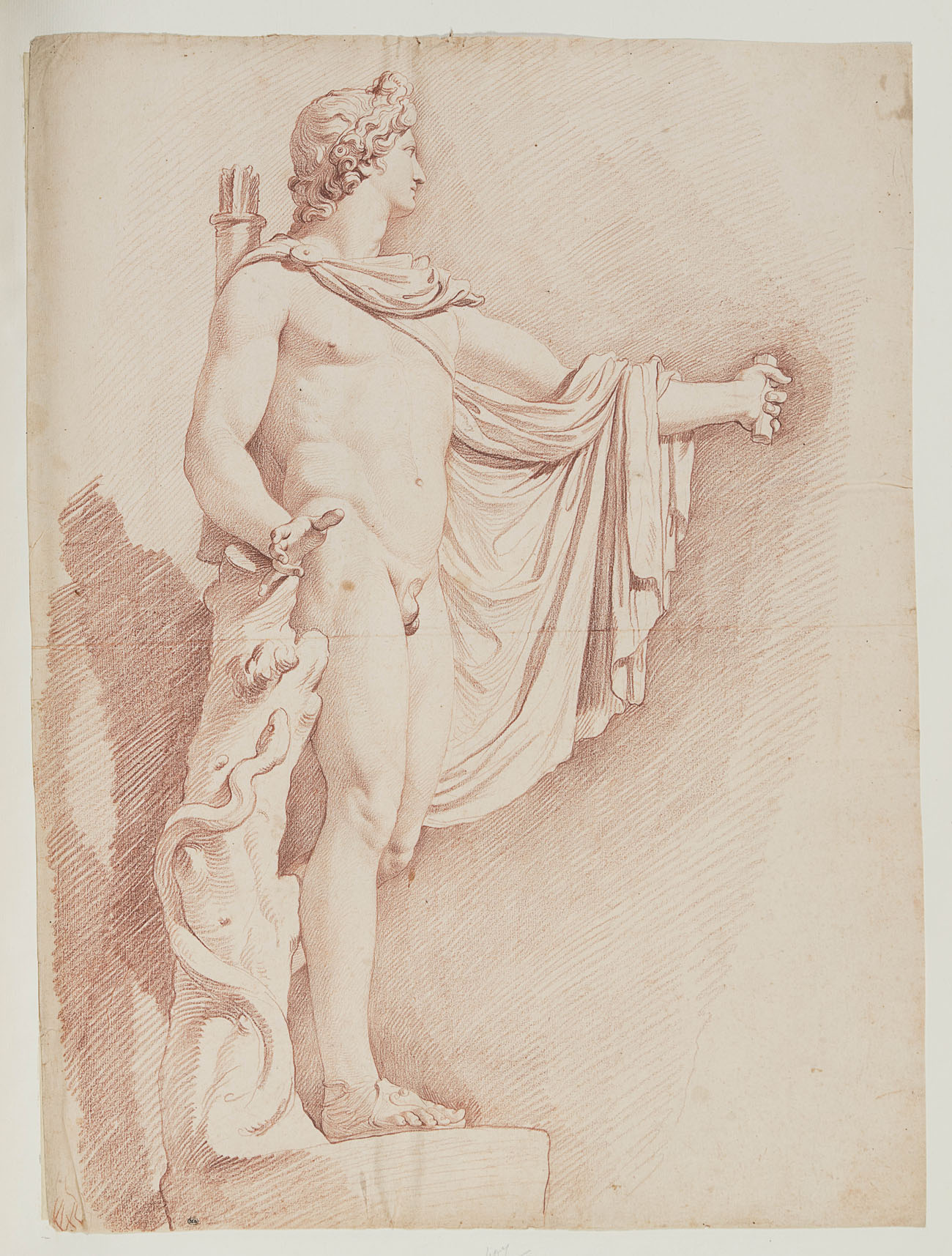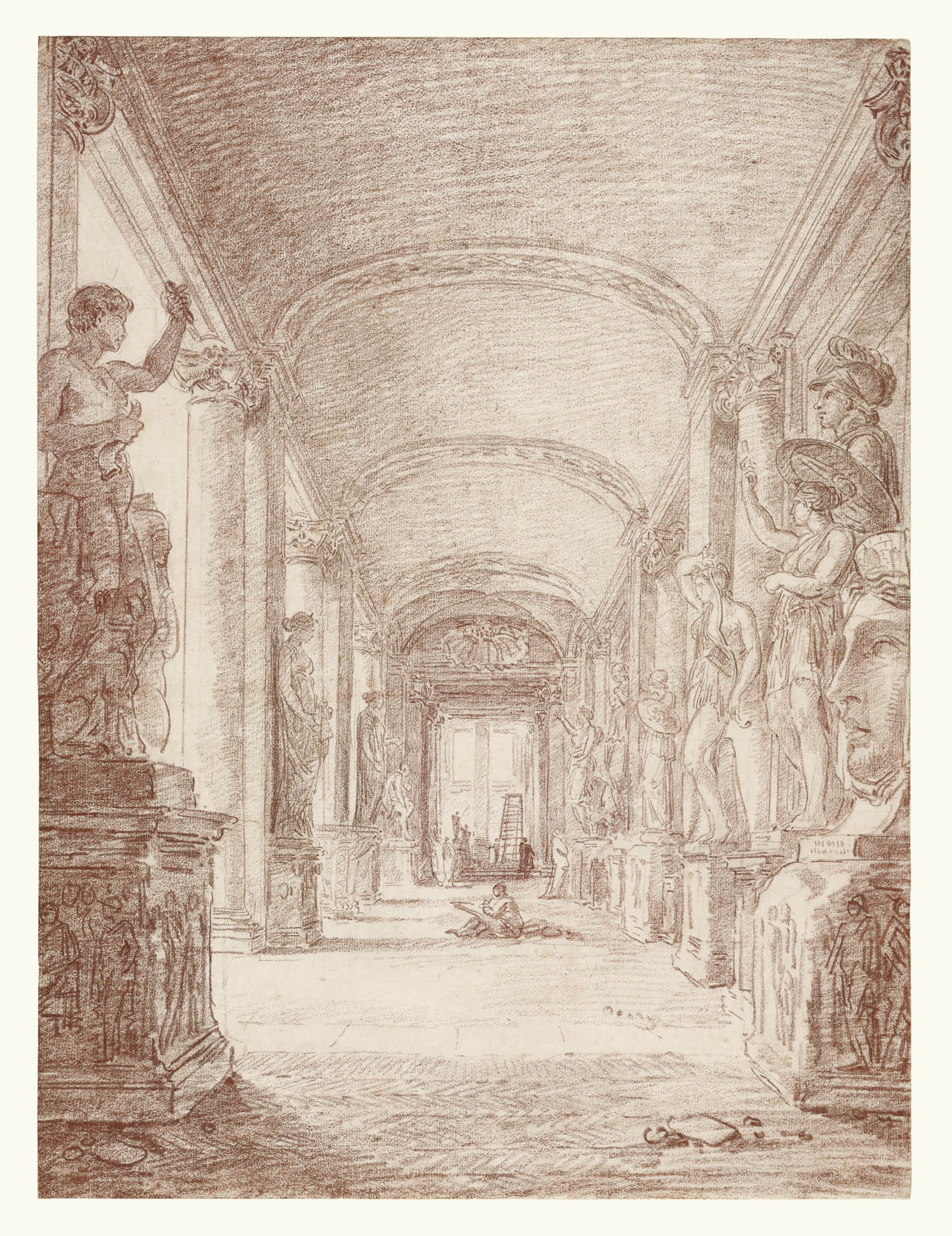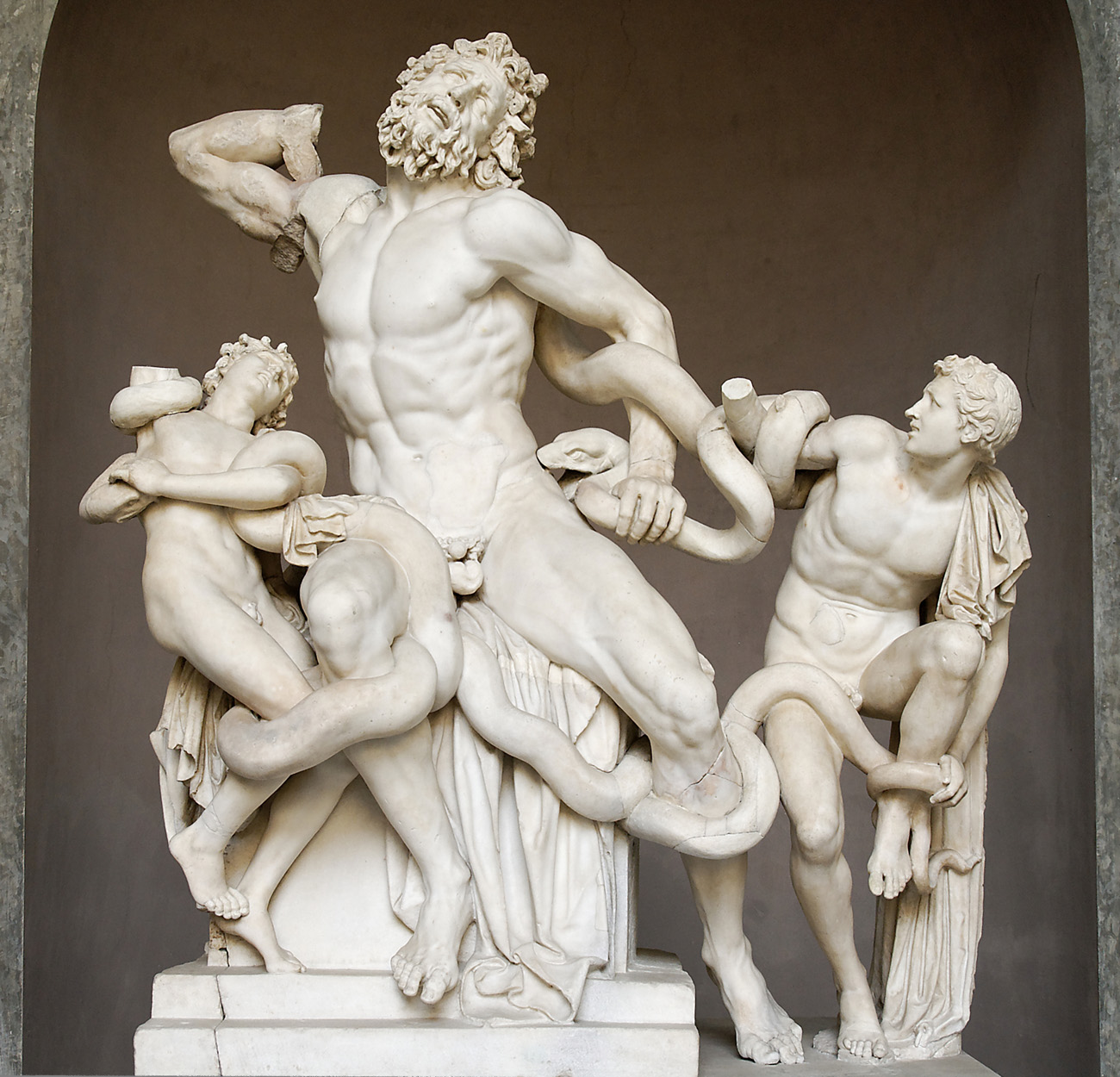How To Draw A Roman Statue

The Apollo Belvedere, 1726–32, Edme Bouchardon. Red chalk, 22 i/ii x 16 vii/viii in. Paris, Musée du Louvre, Département des Arts graphiques, INV. 23999. © Musée du Louvre, dist. RMN – Grand Palais / Laurent Chastel
The drawings exhibition The Sculptural Line was timed to coincide with Bouchardon: Imperial Artist of the Enlightenment, a large international exhibition that has brought to life the work of one of the most accomplished sculptors of eighteenth-century France. Too his activity as a sculptor, Bouchardon was also an incredibly prolific draftsman whose creative human activity often began on newspaper, working out ideas through meticulous drawings, mostly executed in red chalk. Like many artists of his time, Bouchardon visited Italian republic and spent fourth dimension in Rome to learn and study the art of the past; at that place he drew after the antique and mod sculptures that abounded everywhere in the city.
In Rome, during the Renaissance, important statues from artifact were rediscovered—literally unearthed from the soil of the city afterwards having been buried in dirt and oblivion for centuries. Before long they became among the most historic examples of classical sculpture ever since. Their rediscovery was so sensational that artists flocked to Rome to see them. Parallel to these rediscoveries were those of antique texts by classical authors such equally Cicero, Pliny, and Vitruvius, which profoundly influenced Renaissance artists. Through them, artists learned that classical sculpture was based on harmonic proportions that were the consequence of a precise, mathematical relation betwixt the caput, limbs, and trunk. This harmonious relation was seen to parallel the harmony on which the universe was established.

A Draftsman in the Capitoline Gallery, about 1765, Hubert Robert. Red chalk, 18 x 13 1/4 in. The J. Paul Getty Museum, 2007.12. Digital image courtesy of the Getty's Open up Content Program
Drawing later on sculpture, specially classical sculpture, became common do starting in the Renaissance, as antique statues were perceived to exist the embodiment of perfection and platonic beauty. In art academies, which flourished across Europe, artists were taught to adore and learn their perfect proportions and encouraged to exercise by copying them. Classical sculpture offered artists a repertory of poses and forms that could exist models of inspiration for their own works.

Taddeo in the Dais Courtroom in the Vatican Drawing the Laocoön, virtually 1595, Federico Zuccaro. Pen and chocolate-brown ink, brush with dark-brown wash, over blackness chalk and touches of blood-red chalk, 6 seven/viii 10 sixteen 3/4 in. The J. Paul Getty Museum, 99.GA.6.17. Digital image courtesy of the Getty's Open Content Program
The most famous of all classical statues was, and probably nevertheless is, the Laocoön, which was dug out of the basis in a Roman vineyard on January 14, 1506. This was immediately recognized to be the famous marble grouping described by the Roman natural philosopher Pliny the Elder. The 3 complex figures represent the Trojan priest Laocoön and his sons struggling confronting the lethal bites of serpents sent by the God Apollo to punish Laocoön for his disobedience.
Michelangelo Buonarroti, who was in Rome then, working for the pope, was immediately sent to see the new marvel on the recommendation of Pope Julius 2, who was passionate about classical sculpture. The pope bought the marble grouping and placed information technology in the Vatican, in the Belvedere Courtyard, where artists and amateurs went to see it and report its daring composition. Full-size casts and smaller replicas were widely and rapidly produced for collectors as well as artist's workshops, thus becoming a fundamental source of creativeness. Artists who could non make the journey to Rome could still study information technology later on those replicas.

Laocoön and His Sons, Renaissance re-create after a Hellenistic original from ca. 200 B.C. Sculpture: marble, 8ft. high. Photo: Marie-Lan Nguyen. Source: Wikimedia Commons

Laocoön, about 1720, Giovanni Battista Foggini. Statuary, 22 1/16 in. high. The J. Paul Getty Museum, 85.SB.413. Digital image courtesy of the Getty's Open Content Programme
The Venetian painter Jacopo Tintoretto, who never sculpted, owned many of these replicas, made in statuary, wax, and plaster. Co-ordinate to the biographer Carlo Ridolfi, Tintoretto spent a considerable sum on collecting casts of ancient and Renaissance marbles. Several of his graphic works attest to his exercise of sketching after them. In the drawings illustrated below are 2 of these examples. The first is later the head of the Emperor Vitellius, a celebrated bust that in 1523 was sent from Rome to Venice by Primal Grimani, and was then displayed in the Ducal Palace, where artists could study and make plaster casts from it. The second is afterward a Renaissance sculpture representing an Atlas. The latter brilliantly shows a practice that seems to take been common in Tintoretto'south piece of work. The artist would often draw at dark, in the candlelight, moving a candle around the casts in society to explore the play of light and shadow on those forms. The stark dissimilarity of black chalk with touches of white heightening creates a strong sculptural effect in all his drawings.

Studies of a Statuette of Atlas, 1549, Jacopo Tintoretto. Black chalk heightened with white chalk, 10 x fifteen 7/16 in. The J. Paul Getty Museum, 89.GM.72. Digital image courtesy of the Getty's Open Content Program
The Sculptural Line, on view until April 16, 2017, showcases drawings and sculptures from the belatedly fifteenth through the twentieth centuries, with the aim to bear witness that although drawing and sculpting may appear greatly different, for artists the two disciplines were oftentimes intertwined.
Source: https://blogs.getty.edu/iris/studying-sculpture-by-learning-how-to-draw-it/
Posted by: jacksonsentin2001.blogspot.com


0 Response to "How To Draw A Roman Statue"
Post a Comment